Engaging in regular physical activity is crucial for your dog’s overall health and well-being. But what happens when outdoor adventures become limited due to inclement weather, health issues, or other barriers? This is where the creative ways to exercise your dog indoors come into play. Indoor exercise isn’t just a substitute but can be a highly effective and enjoyable alternative to the outdoor hustle and bustle. In this article, we will explore innovative ideas to keep your canine companion active, stimulated, and happy within the comfort of your home, ensuring they receive the essential physical and mental exercise they need. From playful games to training sessions, there’s no limit to indoor activities that can benefit both you and your furry friend.
The Importance of Physical Activity for Dogs
Physical activity is a cornerstone of a dog’s healthy life. It’s not just about maintaining an appropriate weight and muscle tone but also encompasses a range of physical, behavioral, and psychological benefits. Here’s a look at why ensuring your dog stays active is so crucial.
Physical Well-being
Regular exercise is paramount for a dog’s physical health. It aids in controlling their weight, reducing the risk of obesity, and associated health issues like diabetes, heart disease, and joint problems. Active dogs tend to have stronger muscles and bones, enhancing their physical strength and agility. Their digestive and immune systems also function better, leading to improved overall health.
Behavioral Benefits
Physical activity is directly linked to a dog’s behavior. Dogs, especially younger ones, have an innate energy that needs to be channeled appropriately. Regular exercise helps in reducing common behavioral problems such as excessive barking, chewing, and digging. An active dog is less likely to engage in destructive behaviors, as the energy is utilized in a positive manner.
Psychological Health
Exercise is not just a physical need but also a mental one. Physical activities stimulate a dog’s mind. Games, toys, and training sessions contribute to mental stimulation, alleviating boredom and associated issues like anxiety and depression. Mental stimulation is particularly important for intelligent and high-energy breeds that require not just physical exhaustion but also mental engagement to stay balanced and happy.
Strengthening Bond
Exercising is a shared activity that significantly strengthens the bond between a dog and its owner. It’s a time of interaction, communication, and mutual enjoyment. Whether it’s a game of fetch, a training session, or any other indoor activity, it provides an opportunity for owners to understand their pets better, and vice versa, fostering a stronger, deeper connection.
Socialization
While this article focuses on indoor activities, it’s worth mentioning that outdoor exercises and walks contribute to a dog’s socialization skills. However, indoor play can also expose dogs to different stimuli, sounds, and situations, especially when varied and creative methods are employed.
In the subsequent sections, we’ll delve into creative ways to exercise your dog indoors that not only cater to their physical needs but also provide mental stimulation and fun, ensuring that your beloved pet remains healthy, happy, and well-adjusted, even when stepping outside isn’t an option.
Indoor Exercise Options

When outdoor excursions aren’t feasible, turning to indoor options to ensure your dog remains active and engaged is essential. Here are creative and effective ways to exercise your dog indoors.
1. Hide and Seek
Turn a simple game of hide and seek into an exciting indoor exercise. Hide treats or your dog’s favorite toys around the house and encourage them to find them. It not only provides physical activity but also mental stimulation as they use their sense of smell and intelligence to locate the hidden items.
2. Staircase Exercise
If you have a staircase, use it! Encourage your dog to run up and down the stairs. Always supervise this activity to ensure safety, especially for breeds prone to joint issues.
3. Tug-of-War
Engage in a game of tug-of-war with an appropriate toy. It’s a great way for dogs to exert energy and it also helps in strengthening their muscles. Always ensure the game remains friendly and is stopped if it gets too aggressive.
4. Fetch Indoors
Who said fetch is only for the outdoors? Clear some space and you can easily play a game of fetch inside the house. Soft toys are advisable to prevent any damage to indoor items.
5. Puzzle Toys and Interactive Feeders
Offer toys that are not just about chewing but also solving puzzles to access treats. It keeps your dog busy and mentally engaged.
6. Obedience Training Sessions
Utilize indoor time to reinforce obedience training. Run through the commands and tricks your dog already knows, and introduce new ones. It keeps the mind active and reinforces good behavior.
7. DIY Obstacle Course
Create a mini obstacle course using furniture and other safe household items. Guide your dog through jumps, crawls, and navigations. It’s fun, and it helps improve agility and confidence.
8. Social Playdates
If space allows, invite a well-behaved doggy friend over for a playdate. Ensure both dogs are supervised. The social interaction and play are excellent for their mental and emotional health.
9. Indoor Tracking Games
Play tracking games where you drag a treat or a scented item along the floor to create a track that your dog must follow to find a reward. It’s great for mental stimulation and engages their strong sense of smell.
10. Dance Party
Play some music and dance with your dog. Dogs love to jump and move around. Use this as an opportunity to get both you and your pet moving.
Each dog is different, with unique needs and preferences. The key to successful indoor exercises lies in being attentive to your dog’s responses and adapting activities to suit their temperament, age, and physical capabilities. Always prioritize safety and avoid exercises that could lead to injuries or are not suited for your dog’s specific breed or health condition. The goal is to keep them engaged, active, and happy in the confines of your home.
Safety Precautions
Embarking on indoor exercises requires a specific set of precautions to ensure the well-being and safety of your pet. Here are some safety measures to consider.
1. Space Consideration
Ensure that the space used for indoor exercises is free of hazards. Remove breakable items, ensure the floor isn’t slippery, and that there are no sharp or dangerous objects that the dog could come into contact with during play or exercise.
2. Monitor Intensity
Every dog has a different fitness level. Pay attention to your dog’s endurance and physical capabilities. Avoid overexertion and ensure that the activities are appropriate for your dog’s age, health, and breed.
3. Stay Supervised
Always supervise your dog during indoor exercises, especially when introducing a new activity. It helps in promptly addressing any unexpected behaviors or situations and ensures your pet’s safety.
4. Water Accessibility
Ensure that your dog has access to fresh water during and after exercise. Hydration is crucial, especially after physical activity.
5. Check Equipment
If you’re using toys, make sure they are in good condition and appropriate for your dog’s size. Regularly inspect them for wear and tear to avoid the risk of choking or ingestion.
6. Know Your Dog
Be mindful of your dog’s medical history, physical limitations, and behaviors. If your dog has underlying health conditions, consult your vet to understand the safe exercises for them.
7. Allow Rest
Just as exercise is important, so is rest. Give your dog time to rest and relax after an exercise session. It aids in muscle recovery and energy restoration.
8. Air Quality
Ensure good ventilation in the exercise area. The quality of air is crucial for your dog’s respiratory health.
9. Emergency Protocols
Be prepared for emergencies. Having a first aid kit and emergency contact numbers at hand is always advisable.
10. Feedback and Adaptation
Pay attention to your dog’s feedback. If they appear to dislike or struggle with a particular activity, adapt and try something different.
Safety during indoor exercises isn’t just about the physical environment but also involves understanding your dog’s individual needs and behaviors. Exercise should be a positive and enjoyable experience for both you and your pet, promoting not just physical wellness but also fostering a deeper bond.
Final Thoughts
Finding creative ways to exercise your dog indoors is crucial for their mental and physical well-being, especially when outdoor activities aren’t an option. Various engaging, fun, and stimulating indoor activities can keep your dog active and entertained, fostering their overall health and happiness. Remember, every dog is unique; hence, tailoring these activities to fit your dog’s specific needs and preferences is essential. These indoor exercises ensure your pet remains vibrant, reducing the risks associated with inactivity. Explore the versatile indoor exercise options, and you’ll discover that keeping your dog active indoors is not just necessary but can also be a lot of fun!
Frequently Asked Questions

What are some simple indoor games to keep my dog active?
Indoor games like hide and seek, tug-of-war, and fetching can keep your dog active and entertained. Additionally, puzzle toys and treat searches can mentally stimulate your pet.
How can I ensure the safety of my dog while exercising indoors?
Remove any hazardous objects or materials from the exercise area. Make sure the space is well-ventilated and spacious enough for the dog to move freely. Always supervise your pet to prevent any accidents.
Can I use staircases for my dog’s indoor exercise?
Yes, staircases can be an excellent tool for a dog’s cardiovascular exercise. However, it’s essential to consider the dog’s age, health, and physical abilities to avoid strain or injury.
How often should I exercise my dog indoors?
The frequency depends on the dog’s breed, age, and energy levels. Generally, engaging them in physical activities a few times daily can help maintain their health and behavior.
How do I know if I’m overexerting my dog with indoor exercises?
Look out for signs of exhaustion, like heavy panting, slowing down, and lack of interest. Always tailor the intensity of the exercise to your dog’s individual capacity.
Can training sessions be considered as a form of indoor exercise?
Absolutely. Training sessions, especially those involving movements like sit, stand, and roll over, can provide both mental and physical stimulation for dogs.
Is it okay to exercise a puppy indoors?
Yes, with proper care. Ensure the activities are gentle and appropriate for their development stage to avoid stressing their still-growing bones and joints.
Are there specific breeds that benefit more from indoor exercises?
All dogs can benefit from indoor exercises, especially breeds with high energy levels. However, adapt the activities to fit the specific needs, abilities, and health conditions of your dog.
How long should each indoor exercise session last?
It varies based on the dog’s energy levels, age, and health. Start with shorter sessions and gradually increase the duration, monitoring your dog’s response.
Can indoor exercises replace outdoor walks completely?
While indoor exercises are beneficial, they should complement outdoor walks, not replace them. Outdoor walks offer unique stimuli and socialization opportunities vital for a dog’s overall well-being.

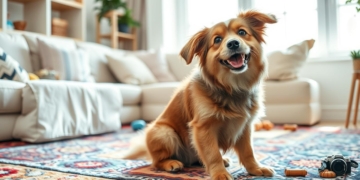




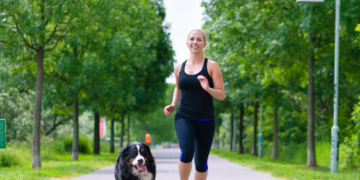

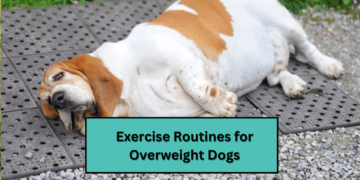







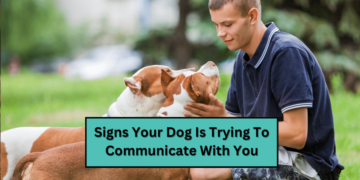


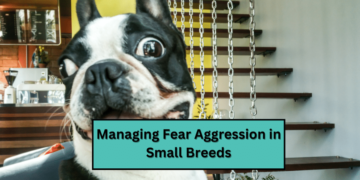

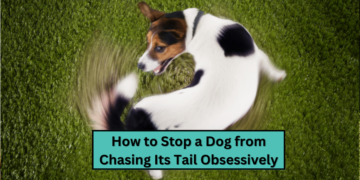

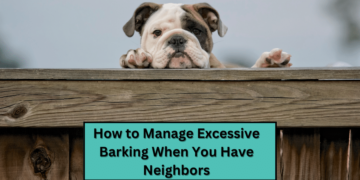




























Discussion about this post